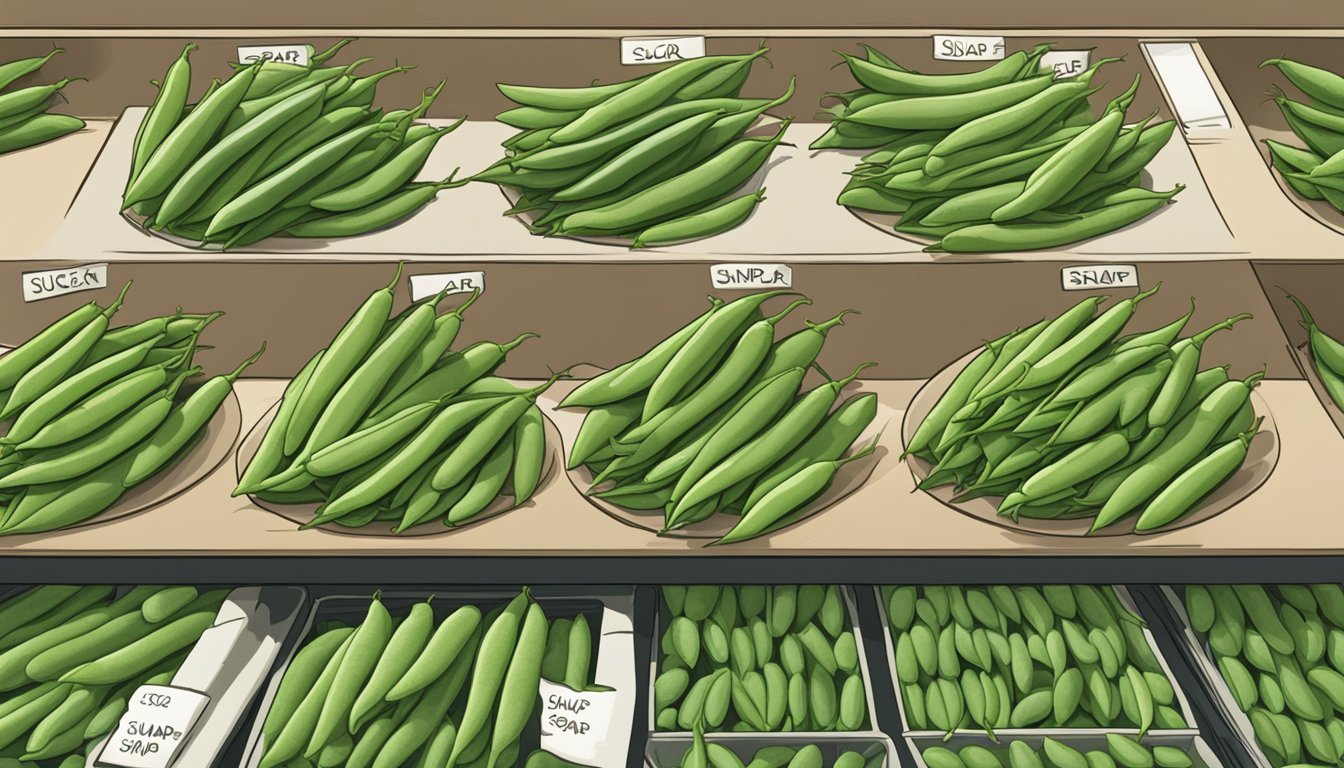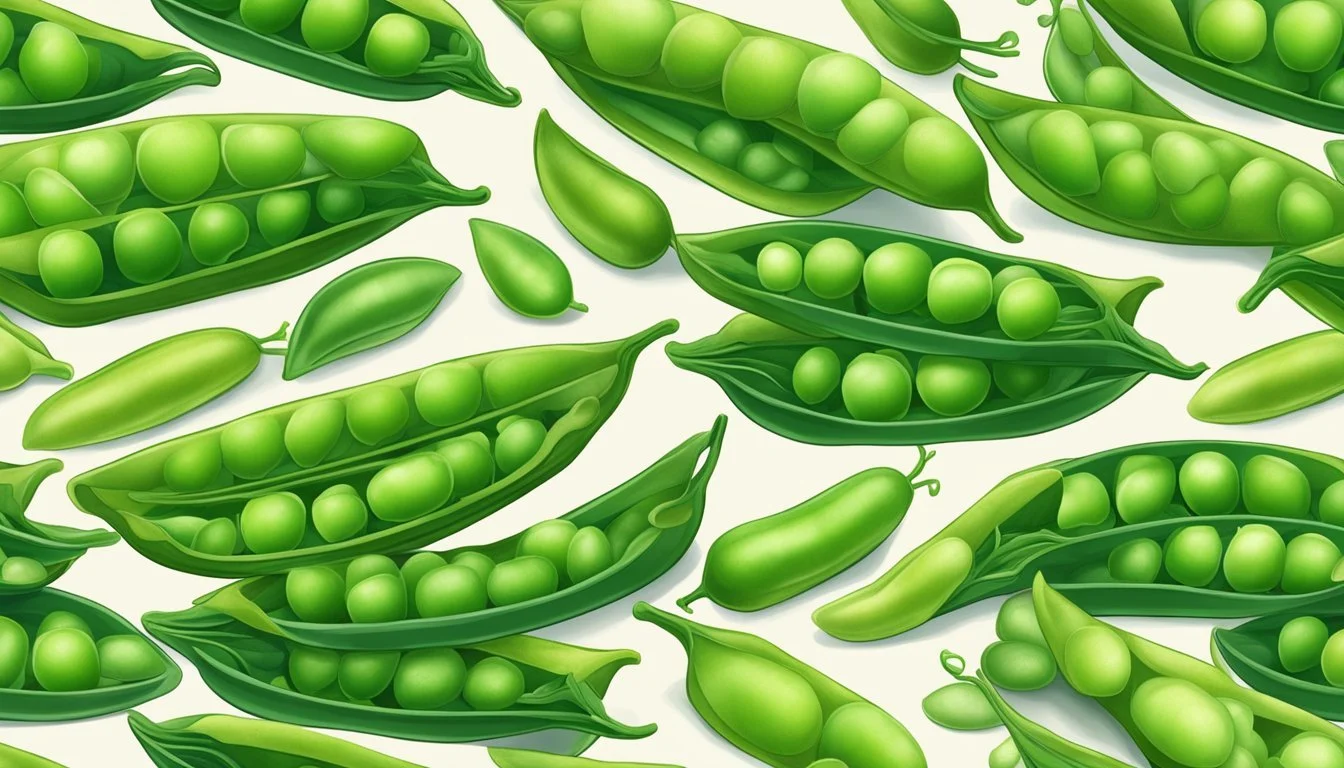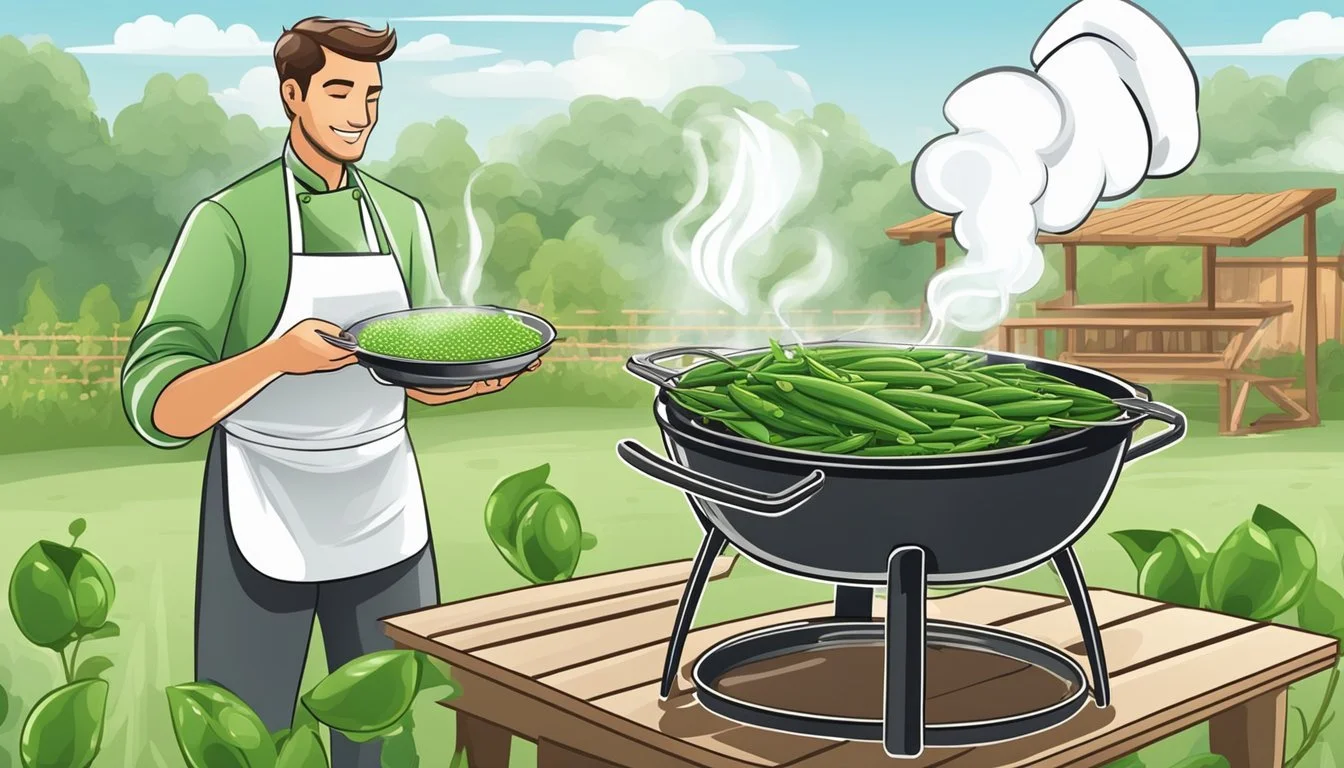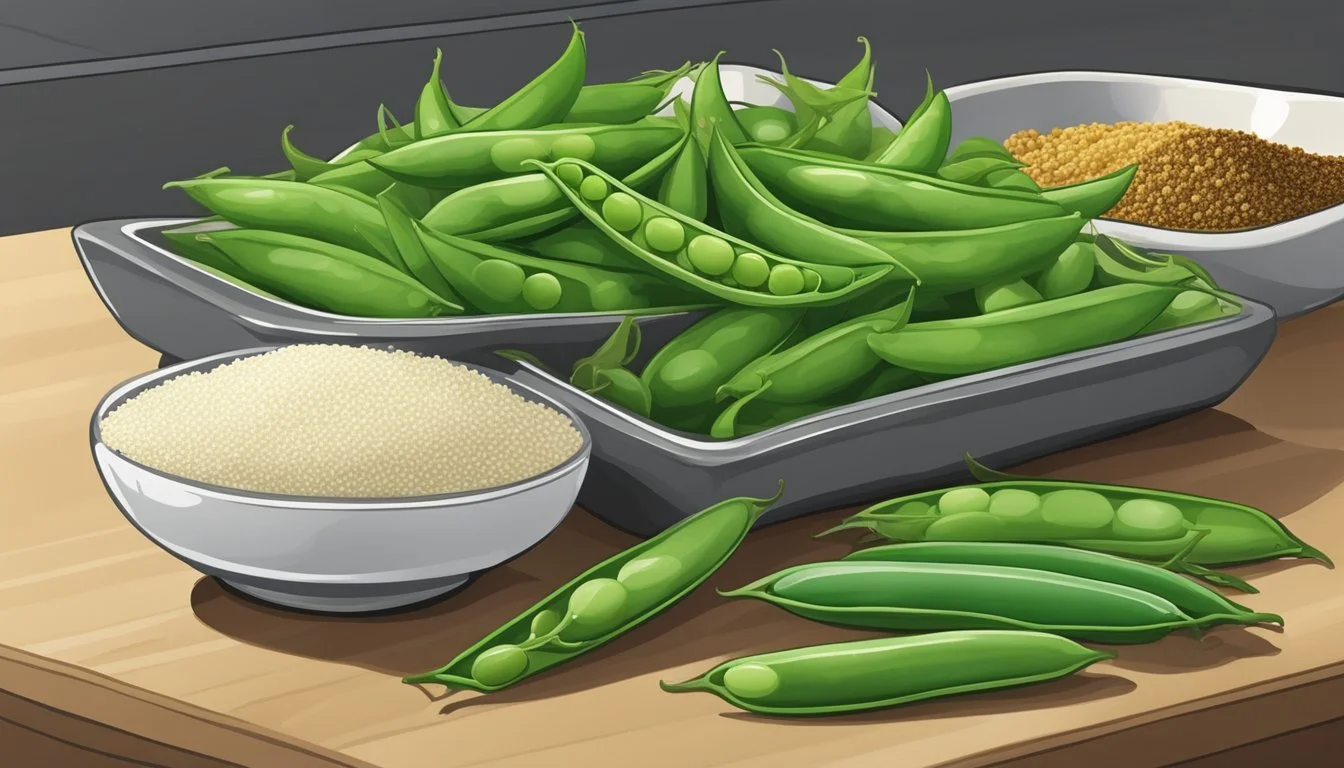Sugar Snap Peas Substitutes
Best Alternatives for Cooking
Sugar snap peas are a versatile vegetable, beloved for their sweet flavor and crunchy texture. They are not only delicious but also packed with nutrients like dietary fiber and vitamins, making them a healthy addition to any meal. From stir-fries to salads, their ability to enhance various dishes is unparalleled.
When sugar snap peas are unavailable or not to your taste, several substitutes can fill the gap while maintaining both flavor and nutritional content. Green peas, for instance, can provide a similar sweet profile, while snow peas offer a comparable crunch to keep your dishes vibrant and satisfying.
Other alternatives like green beans and broccoli can also be considered, bringing their unique benefits to your meals. These substitutes ensure that whether you're making curries, soups, or stir-fries, you don’t need to sacrifice texture or taste in your culinary creations.
Understanding Sugar Snap Peas
Sugar snap peas are fresh, crunchy, and sweet, making them a versatile addition to many dishes. Their nutritional profile includes essential vitamins, while their culinary uses range from salads to stir-fries.
Characteristics of Sugar Snap Peas
Sugar snap peas, also known as snap peas, are an edible-podded pea. They are a hybrid of snow peas and garden peas. Their key characteristic is their sweet and crunchy texture, which makes them popular for snacking fresh or adding to cooked dishes.
Their pods are plump and contain small, tender peas. Unlike garden peas, both the peas and pods are edible, eliminating the need for shelling. They maintain their crispness even after light cooking, which makes them ideal for stir-fries, salads, and as a fresh snack.
Nutritional Profile
Sugar snap peas are low in calories and packed with nutrients, offering a healthy addition to any diet. They are a rich source of dietary fiber, which aids digestion. They provide significant amounts of vitamin C and vitamin A, both of which are essential for immune function and skin health.
A one-cup serving contains about 60 calories, 4 grams of dietary fiber, and 7 grams of protein. They also contain iron, which is vital for blood health, and smaller amounts of B vitamins, which support energy metabolism.
Culinary Uses
Sugar snap peas are versatile in the kitchen. They can be eaten fresh as a crunchy snack or cooked in various dishes. Their sweet flavor complements many savory dishes. They are commonly used in stir-fries, offering a crisp texture that stands up to heat.
In salads, sugar snap peas add a refreshing crunch. They are also used in soups and stews, providing a pleasant texture contrast. When sautéed with other vegetables or added to curries, their sweet flavor enhances the overall taste of the dish.
Selecting Substitutes for Sugar Snap Peas
In choosing substitutes for sugar snap peas, one must consider aspects such as flavor, texture, and the cooking methods suitable for these alternatives. The right choice ensures that the dish remains appetizing and the ingredients work harmoniously together.
Criteria for Substitution
When selecting a substitute for sugar snap peas, focus on flavor, texture, and cooking compatibility. Sugar snap peas are known for their sweet taste and crunchy texture, and the substitute should resemble these qualities.
Flavor: The substitute should have a slightly sweet flavor to maintain the dish's taste profile.
Texture: A crunch similar to sugar snap peas is crucial, especially for dishes like salads and stir-fries.
Cooking Method: Consider if the substitute can withstand the cooking method intended, be it raw in a salad or sautéed in a stir-fry.
Common Substitutes Overview
Several vegetables can stand in for sugar snap peas. The most popular choices include snow peas, edamame beans, and green beans.
Snow Peas: They have a mildly sweet flavor and a crisp texture, making them an excellent substitute in most dishes.
Edamame Beans: These beans offer a slight sweetness and firmness but may require precooking for certain recipes.
Green Beans: While not as sweet, their crunch makes them suitable for salads and stir-fries. Adjust seasoning to achieve a closer flavor match.
These substitutes provide versatility and can adapt to various recipes, ensuring that the absence of sugar snap peas does not compromise the dish's quality.
Vegetable Substitutes
When looking for alternatives to sugar snap peas, several vegetables can offer similar textures, flavors, and nutritional value. The following options are great for various dishes, such as salads, stir-fries, and side dishes.
Snow Peas
Snow peas, also known as Chinese pea pods, are a popular substitute for sugar snap peas. They are flat with small peas inside and have an edible pod. Like sugar snap peas, they can be eaten raw or cooked.
The cooking time for snow peas is typically short, often just a few minutes of steaming or sautéing, making them a convenient option. They are crunchy and have a mildly sweet flavor, which works well in stir-fries and salads.
Garden Peas
Garden peas, also called green peas, are another viable substitute. Unlike sugar snap peas, only the seeds are eaten. They are known for their bright, sweet taste and are often used in stews, soups, and pasta dishes.
Garden peas can be fresh, frozen, or canned, providing versatility in cooking. They are also easy to steam or boil, usually taking around 5 to 7 minutes. Their sweetness adds a pleasant contrast to savory dishes.
Green Beans
Green beans, also referred to as string beans or snap beans, are commonly used as an alternative. They have a similar crunchy texture but are slightly less sweet compared to sugar snap peas. Green beans work well in a variety of dishes, including casseroles and stir-fries.
When cooking green beans, a quick sauté or steaming for about 4 to 5 minutes helps retain their bright color and crunchiness. They pair well with garlic, herbs, and lemon, enhancing their flavor in dishes.
Asparagus
Asparagus is a nutritious and versatile vegetable that can replace sugar snap peas in many recipes. It has a unique, slightly bitter flavor and a firm texture. Asparagus is excellent in sautéed dishes, roasted, or even grilled.
The cooking time for asparagus varies; for a tender texture, it typically needs about 5 to 7 minutes of sautéing or steaming. Its spear-like shape adds an aesthetic appeal to dishes, making it a visually appealing substitute.
Broccoli
Broccoli, known for its health benefits, is another great substitute. It offers a different taste profile but matches the crunch and vibrant color of sugar snap peas. Broccoli can be used in a wide range of recipes, from soups and stews to salads and pasta.
Steaming or sautéing broccoli takes around 5 to 6 minutes, preserving its nutrients and providing a bright, slightly sweet taste. Its florets and stems both can be used, adding variety to meals.
Legume Substitutes
Sugar snap peas are a delightful addition to any dish, but sometimes alternatives are needed. This section explores several substitutes that not only match the texture and flavor but also contribute nutritional benefits like fiber and protein.
Edamame
Edamame, immature soybeans, are an excellent substitute for sugar snap peas. They bring a similar crunch and a slightly sweet, nutty flavor.
Packed with protein and fiber, edamame is a great option for those seeking a nutritious addition. They are versatile and can be used in stir-fries, salads, and even as a standalone snack. Vegan and low in calories, edamame fits well into various dietary preferences, making it a popular choice.
Lima Beans
Lima beans are another suitable substitute, known for their creamy texture when cooked. They have a mild, starchy flavor, making them versatile for many dishes.
Lima beans are rich in fiber and offer significant protein content. They can be used in soups, stews, salads, and casseroles. These beans are also an excellent source of iron and magnesium, making them not only a tasty but also a nutritious option for replacing sugar snap peas.
Black-Eyed Peas
Black-eyed peas bring a distinct earthy flavor to recipes. They have a firm texture that holds up well in various cooking methods.
These legumes are high in fiber and protein, making them a nutritious choice. Black-eyed peas are often used in salads, soups, and traditional dishes like Hoppin’ John. They are also a go-to for vegan recipes looking for a hearty ingredient that can enrich the overall flavor profile of the meal.
English Peas
English peas, also known as garden peas, are sweet and tender, making them a delightful substitute for sugar snap peas.
They can be used fresh or cooked in a variety of dishes, from salads to soups. English peas are rich in fiber and crucial vitamins like Vitamin C and Vitamin K. They also provide a decent amount of protein. Their versatility and nutritional profile make them an appealing substitute for sugar snap peas in many recipes.
Alternative Cooking Methods
When preparing dishes with sugar snap peas, there are multiple ways to use frozen and canned alternatives. Knowing how to adjust for different cooking times is also crucial to achieve the best results.
Using Frozen Peas
Frozen peas can be a convenient substitution. They are often pre-blanched, which means a shorter cooking time. To integrate them into recipes, thawing is advised. This helps remove excess moisture.
In stir-fry dishes, add them towards the end of the cooking process. This preserves their texture and color. For soups and stews, they can be added directly from the freezer. Just be cautious of the additional water content they may bring.
Incorporating Canned Peas
Canned peas offer a quick and easy option. Rinsing and draining them helps remove the brine, resulting in a less salty flavor. Canned peas are softer in texture, making them ideal for dishes where a creamier consistency is desired.
When adding to sautés or stir-fries, they should be added last-minute. This prevents them from becoming mushy. For soups and stews, they can be added earlier without losing their shape.
Adjusting for Cooking Time
Different peas have varying cooking times. Frozen peas, being pre-blanched, may require less time. Canned peas are already cooked, so adding them to hot dishes only for reheating suffices.
When replacing snap peas in recipes, consider:
Frozen peas might need 2-4 minutes in stir-fry.
Canned peas should be added in the final heating phases.
Using a quick sauté with garlic and ginger can enhance flavors.
Achieving the perfect bite means understanding these slight differences. Balancing these methods ensures every dish retains its intended texture and taste. By adjusting cooking times and methods, one can easily substitute sugar snap peas without compromising on quality.
Seasonings and Flavor Enhancers
Enhancing dishes with the right seasonings and flavor enhancers can transform substitutes for sugar snap peas into exceptional creations. Properly chosen spices, herbs, and combinations bring out the best in any substitute.
Utilizing Spices and Herbs
Salt and pepper are fundamental to any dish, adding essential flavor and balance. Sea salt provides a more nuanced taste compared to table salt. For a spicy kick, black pepper is unmatched.
Garlic and ginger are indispensable, infusing substitutes like zucchini or green peas with a robust taste. Fresh garlic can be minced or crushed, while ginger can be grated to release its aromatic compounds.
Curry powder, a blend of spices, complements peas and adds depth. To introduce subtle sweetness, honey pairs well, especially in sautéed or roasted dishes.
Creating Flavorful Combinations
Creating vibrant combinations is about balancing tastes and textures. Garlic and ginger mixed with honey create a sweet and spicy profile ideal for stir-fries with snow peas. Adding a splash of vinegar can brighten the dish, balancing the sweetness.
For a Mediterranean twist, combine sea salt, pepper, and oregano with olive oil. This combination works wonders with grilled zucchini, accentuating its mild flavor.
In Asian-inspired recipes, mix soy sauce with minced garlic, grated ginger, and a touch of honey to create a savory umami blend. This mixture excels in adding complexity to dishes with edamame.
Incorporating Substitutes in Recipes
When replacing sugar snap peas in recipes, understanding the right substitutes and their best applications ensures dishes remain flavorful and texturally pleasing. Focus on seamlessly integrating alternatives like green peas, snow peas, and edamame into varied culinary contexts.
Salad Applications
In salads, texture plays a critical role. Substitutes like snow peas and green peas work well due to their crunch and subtle sweetness. Chopped snow peas can be used one-for-one to replace sugar snap peas in recipes, providing a fresh bite.
Green peas, either fresh or blanched, offer a similar sweetness and can be tossed into mixed greens without altering the overall flavor profile. Edamame, shelled and lightly steamed, also fits seamlessly into salads, providing a unique, nutty flavor and firm texture.
Main Courses and Side Dishes
For stir-fries, pasta dishes, and other main courses, green beans, zucchini, and asparagus are excellent sugar snap pea substitutes. When using green beans, trim and cut them to size before incorporating them into your dish; they should be used in the same ratio as snap peas.
Zucchini slices can add moisture and a mild flavor, while asparagus provides a slightly earthy taste. Both can be sautéed or roasted and added to pastas or served as sides. These substitutes maintain the balance of flavors and textures in your meal.
Soups and Casseroles
In soups and casseroles, vegetables like broccoli, bell peppers, and cauliflower serve as viable substitutes. Broccoli florets offer a pleasant crunch and absorb flavors well, making them a great addition to brothy or creamy soups.
Bell peppers introduce a sweet and slightly tangy note, ideal for casseroles or thick stews. Cauliflower can mimic the texture of sugar snap peas while providing a neutral taste that adapts to various flavor profiles. These substitutions should be cooked to the same consistency as the original recipe to ensure a cohesive dish.
By carefully selecting appropriate substitutes and understanding their unique attributes, maintaining the integrity and deliciousness of your dishes becomes straightforward and satisfying.









